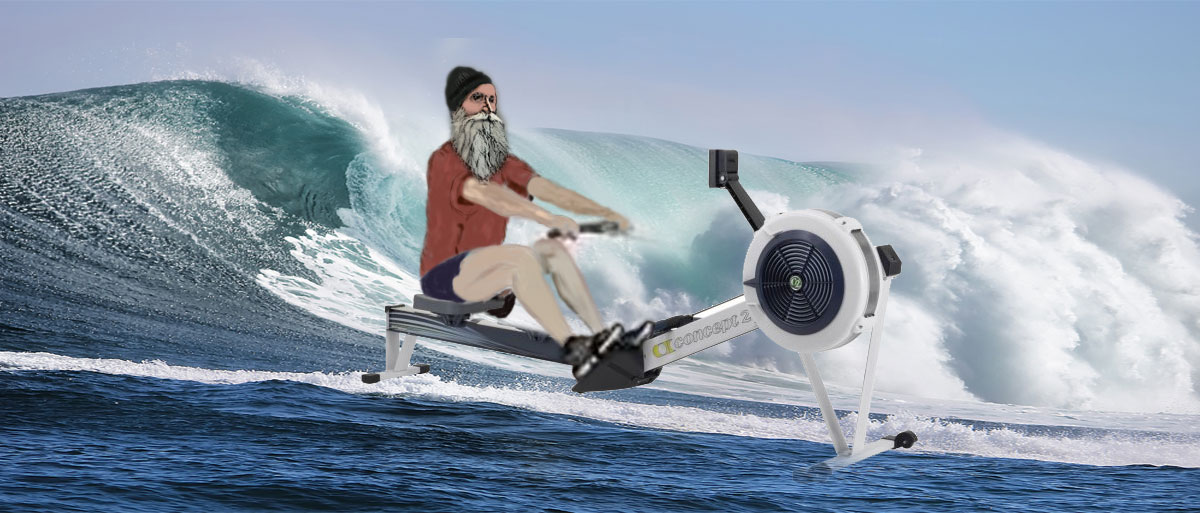
The session for today’s portion of the Pete Plan was designated a steady distance, recovery session. It was supposed to be anywhere from 8K to 15K and was supposed to be done at a recovery pace, with a rating of from 22 to 25. I chose the 8K distance. No warm up was needed or done. The targets in order of priority for compliance were: First: heart rate was to be no higher than 75% max. For that purpose, a HR target zone of was painted on the RowPro screen. The only part of the target zone that I cared about was the top of the zone, which was not to be exceeded. It never came close to the top so that target was met.
Second priority target was to keep the average rating near 22 and that worked out well. The session report shows average rating of 22.
Third and last priority target was pace, which was targeted as 2:18. That came out to be an average pace of 2:17.8, which was close enough. The session report shows an average pace of “2:18,” but that’s because the RowPro 5 for the Mac software for some reason rounds off every figure in the pace column, including the overall average pace, to the nearest whole number of seconds instead of displaying to the nearest tenth.
NOTE: IGNORE the report data for the last split – there’s something wrong with that line of data! I rowed the 8K as near to targets as I could throughout every split and DID NOT row the last split at a pace of 1:32! The total time is correct and the more precise pace average was 2:17.8 but RowPro 5 for the Mac rounds all pace values to the nearest second.
(The software version of RowPro I’m using on a Mac is a Beta version with a few bugs left in it. I use a Windows version of RowPro for any Pete Plan variable interval sessions, because this Beta version for the Mac won’t do variable intervals… but for everything else, including this session today, I use this Beta version of RowPro 5 for the Mac, which usually works perfectly.)
After the Pete Plan 8K steady distance recovery session was done, I decided to watch a movie and do another 10K for the sake of the current concept2.com challenge. But first, here’s the stuff for the Pete Plan 8K:
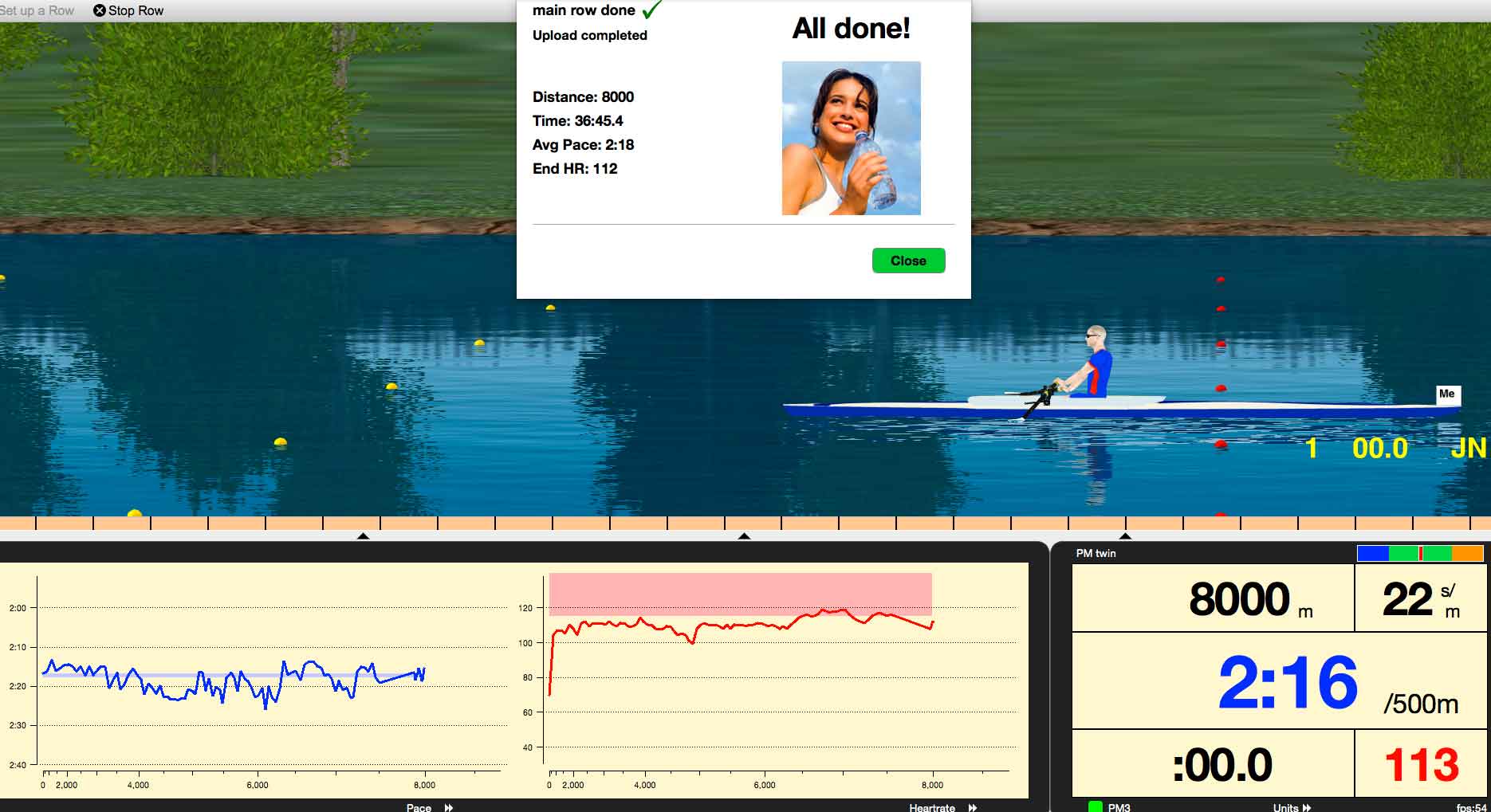
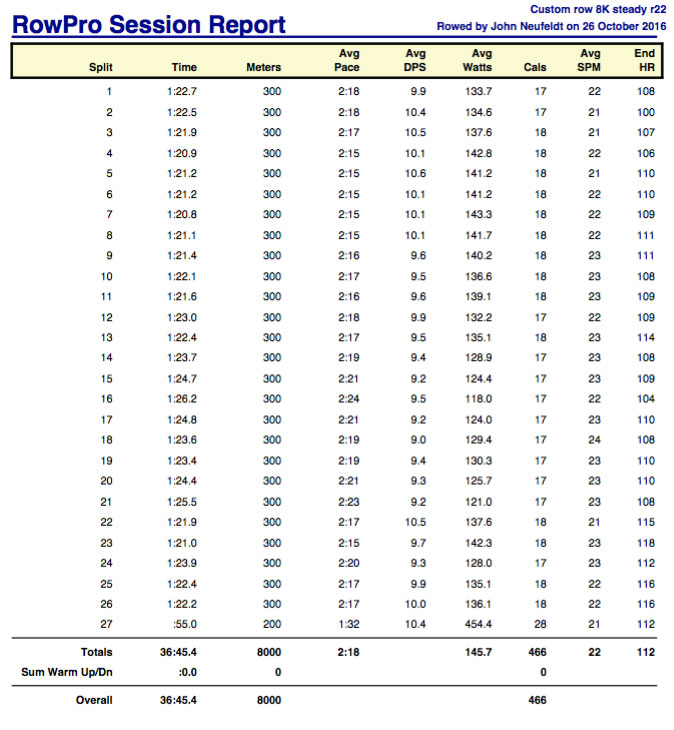
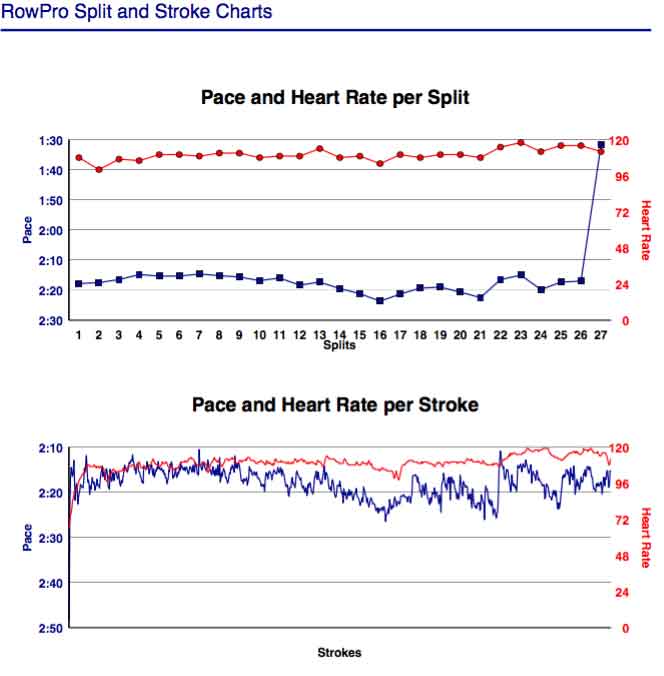
The additional 10K “ocean rowing” was done with an effort level which is the equivalent (as near as I can calculate with the information I have) of the average level of effort with which Sami Inkinen rowed for 18 hours every day, for 45 days while rowing 2,750 miles across the Pacific Ocean from California to Hawaii.
One of the interviews I viewed which featured Sami Inkinen answering questions about that voyage included answers to questions about what he ate every day during those 45 days, how many calories consumed daily, how many hours he slept daily and how much weight he lost during the 45 days of rowing 18 hours daily.
With the above information, I calculated what was his average rowing effort and translated that to a pace at which someone would have to row a Concept 2 rowing machine, if rowing 18 hours a day for 45 days and be rowing the same daily calories burned.
Sami said that he ate 7,000 calories per day. He also said that he lost 26 pounds during those 45 days. And he said he slept for 6 hours each 24 hour period. So I disregarded any consideration for calories he burned while awake and not rowing during the 18 awake hours per day and used the Concept 2 rowing machine monitor to translate calories per hour to pace.
The data used, in addition to his report of eating 7,000 calories per 24 hours, is: He slept 6 hours and the human body reportedly burns about .42 calories per hour per pound of body weight. So I assumed that he weighed an average of about 180 pounds during the voyage and that 6 hours of sleep amounts to 450 calories he burned while sleeping. Also, he lost 26 pounds of weight. But when the voyage started, he was a very fit, world-class triathlete so that 26 pounds was NOT very much in the way of fat. He said that the muscles atrophied – the muscles he wasn’t able to use enough while in the boat and only rowing for 45 days. So the calorie figure I used for the 26 pounds of his lean body which was consumed during the 45 days was the calorie figure for what is reported for “lean beef,” which is 897 calories per pound. Multiply 897 calories by 26 pounds and the number of calories his body consumed relating to his loss of weight was 897 x 26 = 23,322 calories total. Divide that 23,322 calories by 45 days and you get 518 calories average per day from weight loss.
The total figure for calories he spent to do the rowing is:
7,000 calories eaten minus 450 calories for sleeping plus 518 calories per day from his body consuming itself with weight loss = 7,068 calories remaining per 18 hours for rowing. Divide 7,068 calories by 18 and you get about 393 calories for his average hourly rowing effort.
I sat on a Concept 2 rowing machine and set the C2 PM3 to display calories per hour while the RowPro monitor was simultaneously set to display reading of pace in minutes:seconds/500 meters. After doing that I had RowPro show the simultaneous value for the 393 calories per hour in Watts, for the sake of curiosity.
393 calories per hour = pace of about 3:56/500 meters = power level of about 31 Watts.
Whatever the exact, precise numbers were, it doesn’t matter because the above numbers are excellent “ball park” numbers and should be within a very small percentage or fraction of a percentage of the actual values if they could have been measured and recorded during that ocean rowing voyage. If you’d like to see it yourself, the relevant interview with Sami Inkinen should be at this link-> Sami Inkinen interview on youtube
So I did the 10K at the ocean rowing pace of about 3:56. The session was interrupted once when I had to get off the machine for a couple minutes and help my wife carry things. I made up for the lost time by rowing a bit faster until the average pace returned to about 3:56. Then, toward the end, my wife told me that we were going to have a meal in a number of minutes that would have me still on the rowing machine by then, so I increased the pace a little bit near the end, so as to be on time for the meal. (Call me anything you want, but don’t call me late for a meal.)
The 10K ocean row session would have been extremely boring without a distraction, so I watched a documentary. One of the things Sami Inkinen did while rowing at that pace for 18 hours/45 days was to do mathematical calculations in his head and speak aloud what he was calculating while doing them. (I think he did those while his wife was sleeping – while she was awake, they talked about anything and everything and decided, among other things, that they wanted to have children).
If you compare calories burned for 8K at 2:18/500m (which was the first rowing session done today, for Pete Plan training) and 10K at 3:52/500m (for this “ocean rowing” session) you will see that though the 10,000 meter “ocean row” is 25% more distance, it only used 9.7% more calories than the much faster paced 8K. Therefore if a person wants to row maximum distance on a limited number of calories, he can row further at a slower pace.
Rowing slower to go further on the same amount of calories is analogous to driving a car slower, to go further on a gallon of gasoline.
The report and charts for today’s 10K of “ocean-rowing” effort level are below:
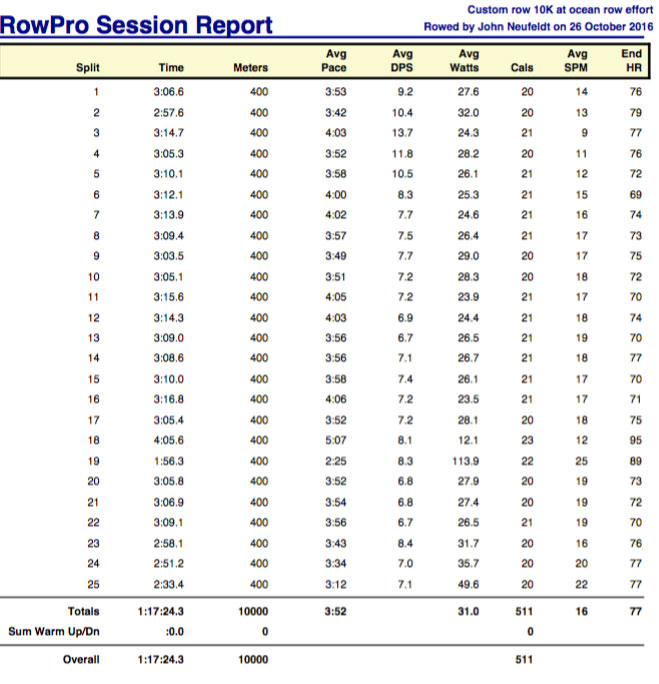
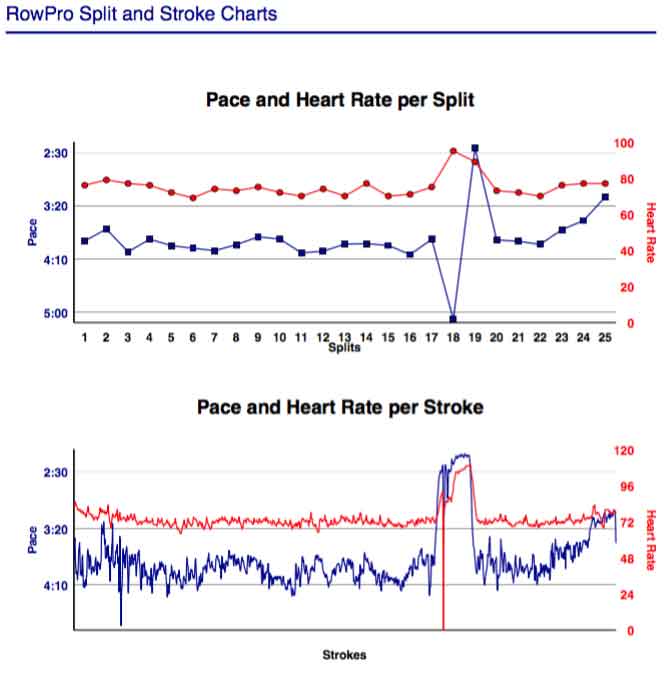
Happy trails to you.
